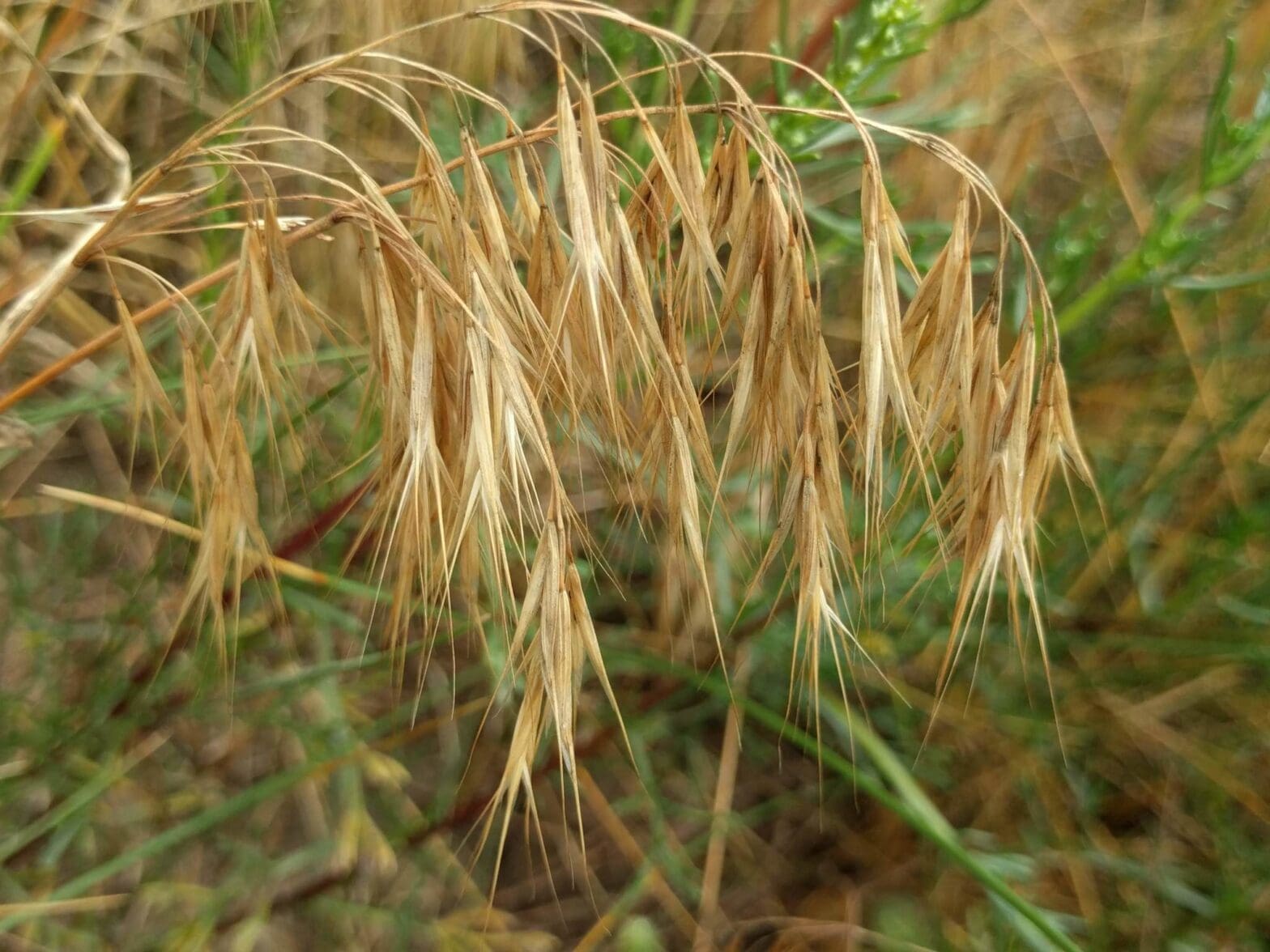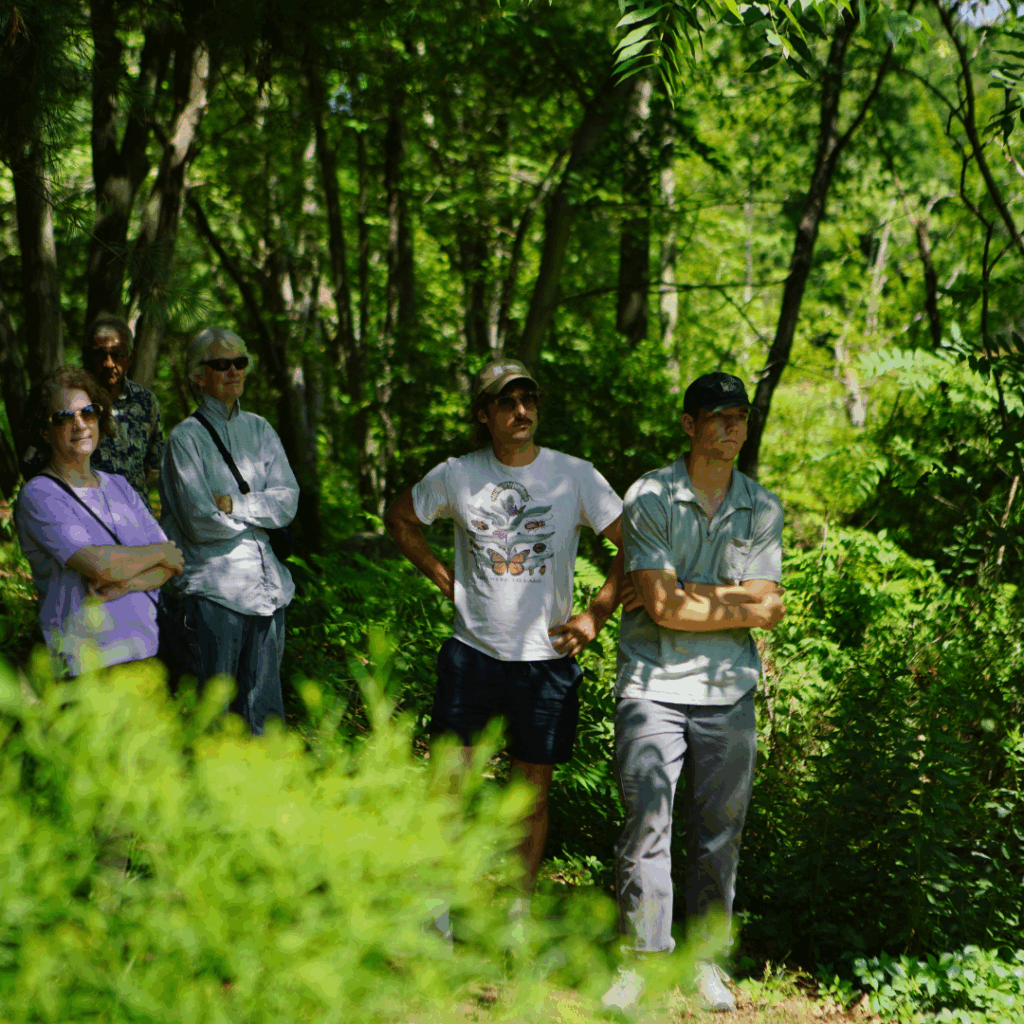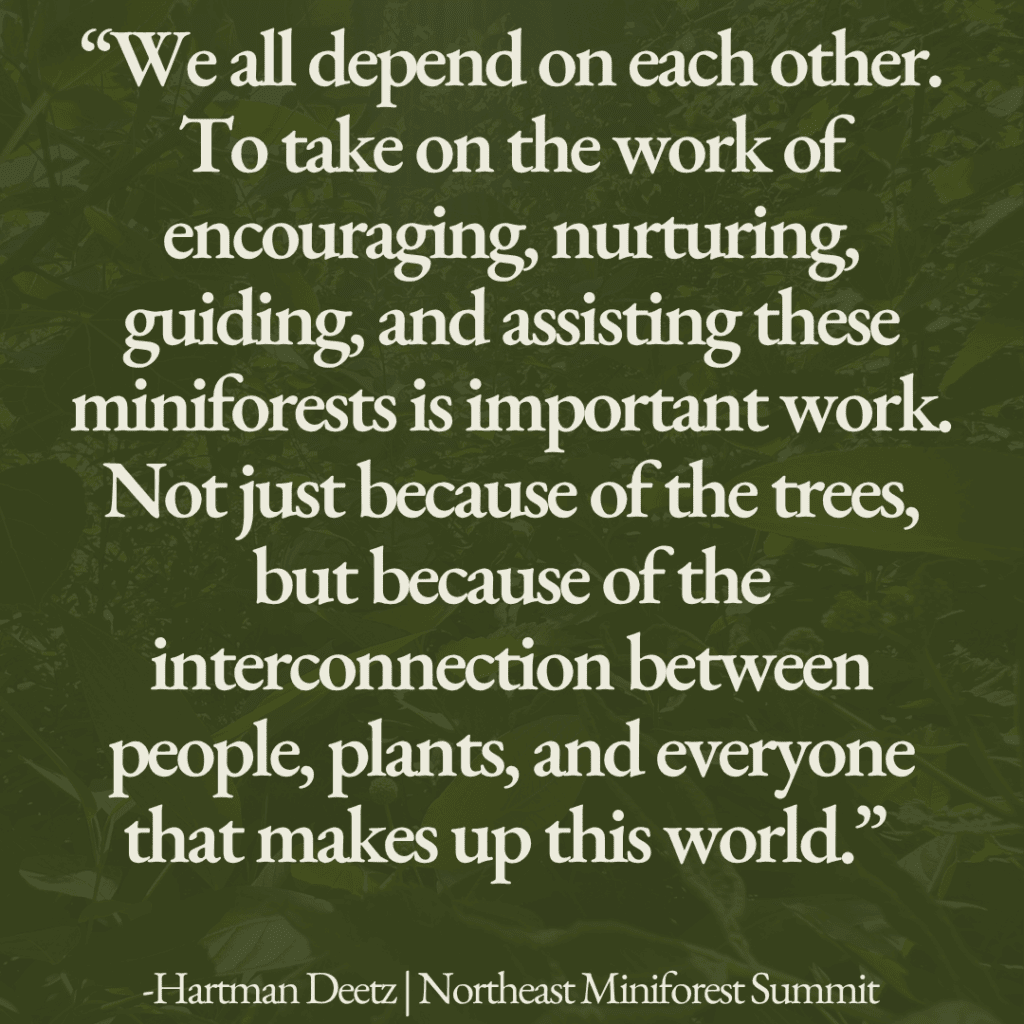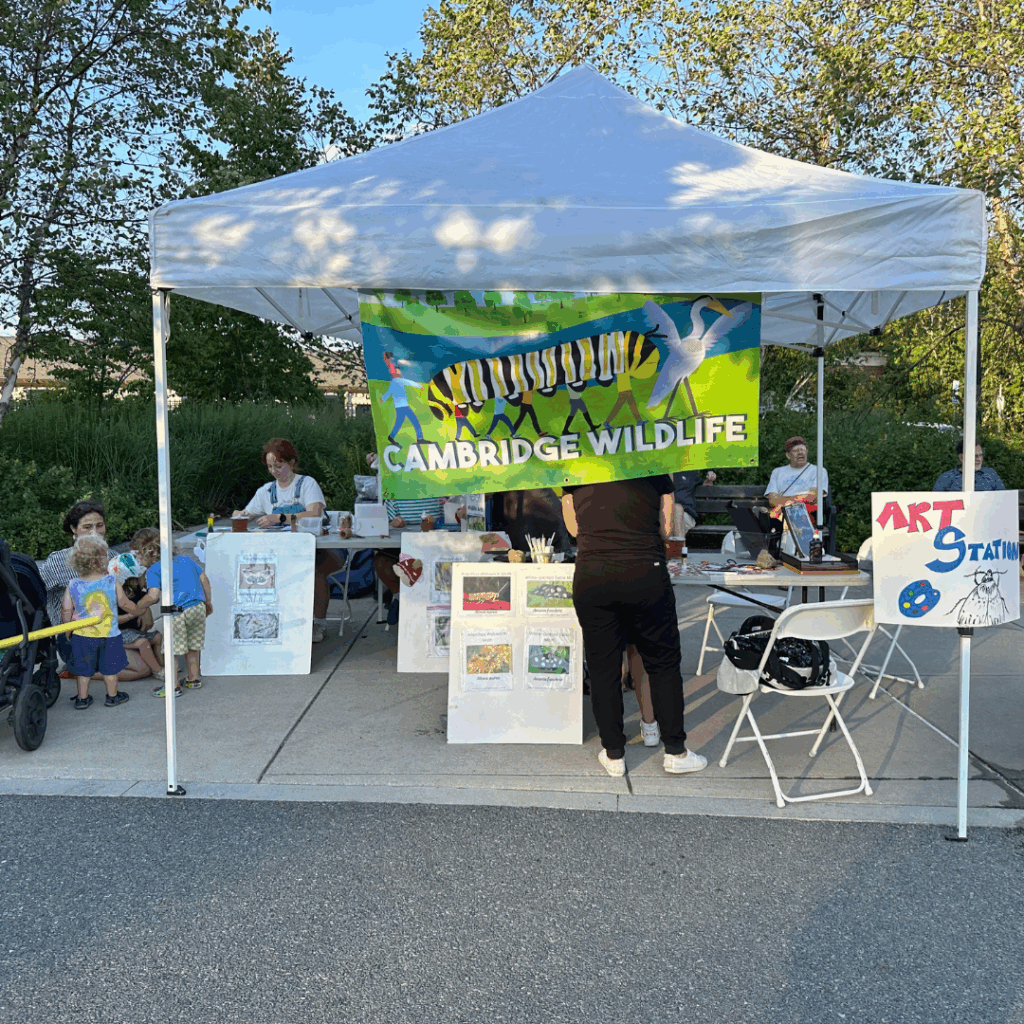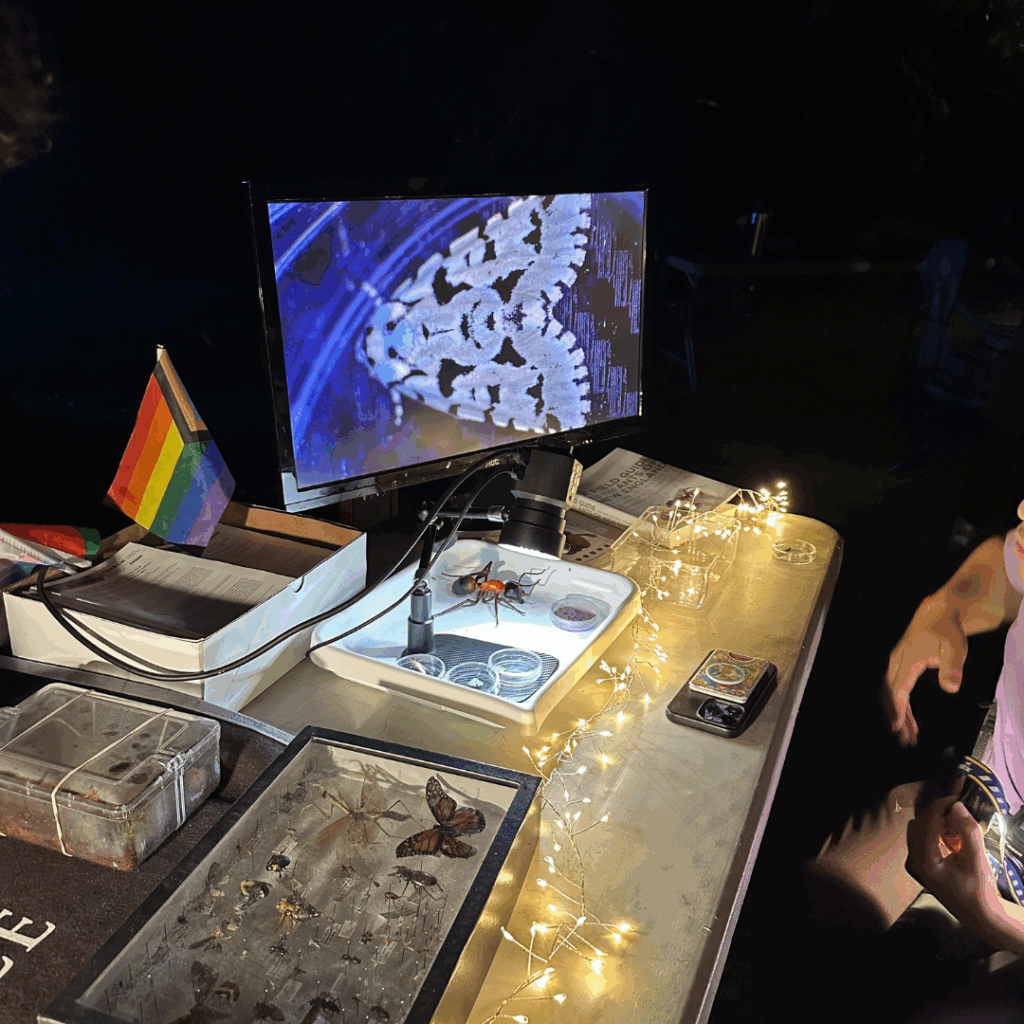What plant plays an important role in the grasslands of its native hemisphere, but alters soil moisture and fire regimes when introduced in North America?
Cheatgrass (Bromus tectorum)!

Michel Langeveld (CC via Wikimedia Commons)
A cheatgrass seed had needled its way into my skin again. I thought that I had freed myself of the cheatgrass when I came back east, to the land of ample water and broad leaves, and threw all of my camping gear into a dark corner of my bedroom. This was not so – it was hiding out in my sock drawer. When I pulled up my socks, I dragged the pointed tips of the cheatgrass seeds up my ankles, and I was once again somewhere out west, nursing the delicate white surface wounds that they left. I was, for the first time, not grateful for the tight warmth-trapping weave of my wool hiking socks – it is highly adept at locking the lance-like grass seed into a comfortable chamber from which it can prod at my ankles. The cheatgrass survived the washer and the dryer and my prying fingernails, survived my desperate attempts to wrench it out of my socks and into the campfire. Cheatgrass burns fantastically well– it’ll ignite from marshmallow-toasting-distance and beyond.
My cheatgrass came with me from Wyoming months ago. Out there, it rolled for miles across the sagebrush steppe, slowly but surely creeping into every space between every shrub. The site where I gathered the seeds into my socks smelled more of earth than sagebrush, which was unusual for the basins where I’d been working. My boss Rachel and I hopped down out of our work truck and took in our site: some sagebrush, sure, but only a few dashes of it scattered between rolling hills of crisp, flame-red cheatgrass. The site was nearly silent; I found myself missing the usual distant whirrr of farm machinery and the cacophonous cry of a startled sage grouse. We were instead accompanied by the whistling of wind and the knowledge that we would be blowing dust into our handkerchiefs for a few days.


“Downy Brome”
Some call cheatgrass “downy brome”, which is a perfect term for it in the early spring when it hasn’t grown into its wretchedness. In early spring, when its long awns have not yet grown stiff and sharp, it is a soft and elegant plant. Its leaves fall in a gentle cascade from the long stem. The downy brome rolls over hillsides and whispers to its sisters in the breeze; as they dry in late summer, the wind knocks the heads of their seeds against one another, and they are scattered to the ground to start their cycle anew. When the cool season rains end and they’ve sucked up all the water they can from the parched earth, their chloroplasts finally falter, and the grass turns a faint purple-red from the awn-tip up. In spring, the dusty green tones of the sagebrush and the brightly-colored grass dapple the landscape. By summer, the sagebrush is nearly overtaken by an orange-brown, foreshadowing the fire which cheatgrass so often fuels. The grass sticks its seeds through your shoes and between your toes and into your socks and the hems of your pants. It doesn’t matter if you stop to pull them out– you will have just as many jabbing and nudging away at you after you walk another ten feet through their swaying abundance. It is useless to shake them out, too. You must pull them, piece by piece, out of your hair and your tent and your boots, and cast them to the ground. This is just what they wish for– you are seeding them for next year.
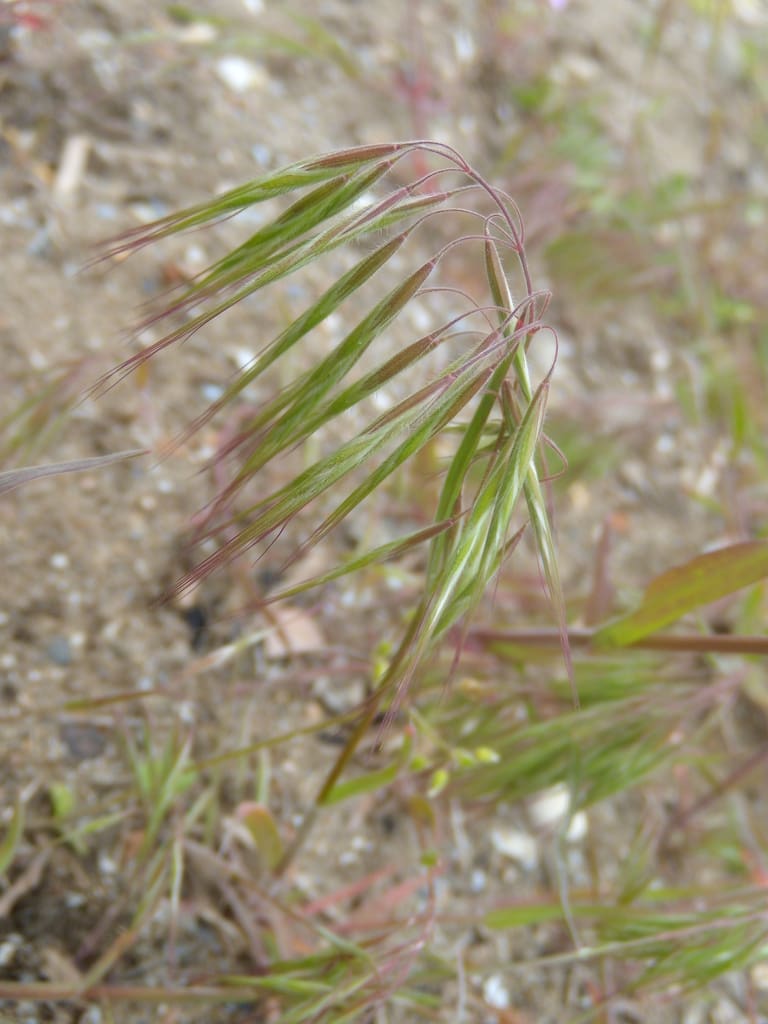
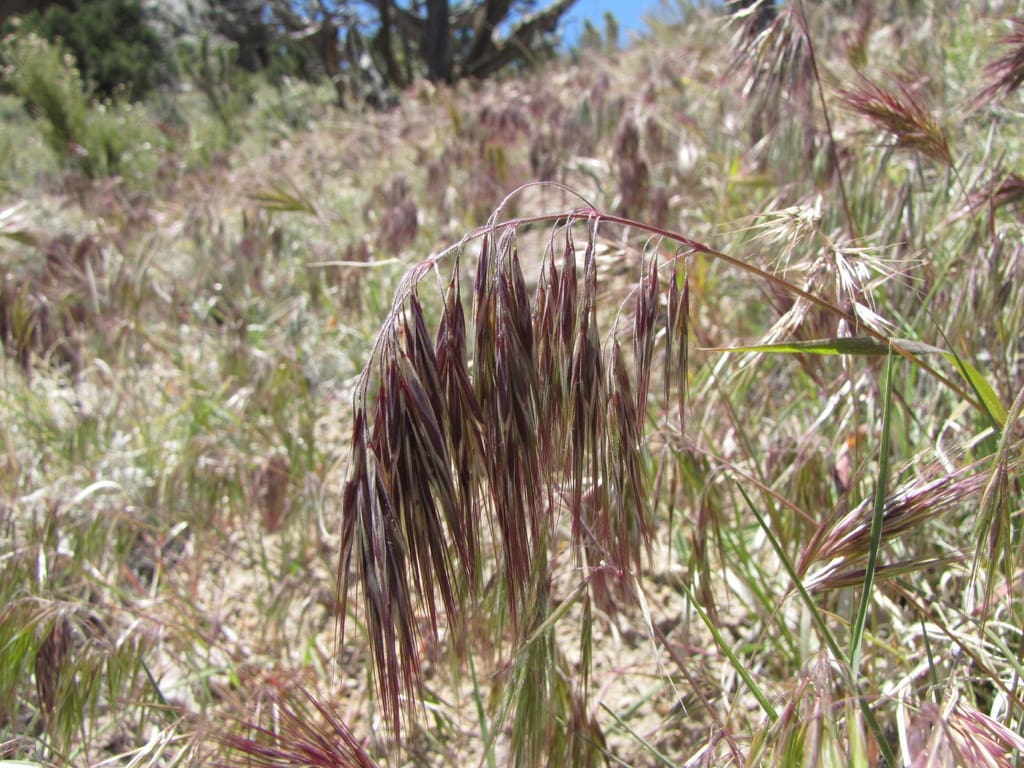
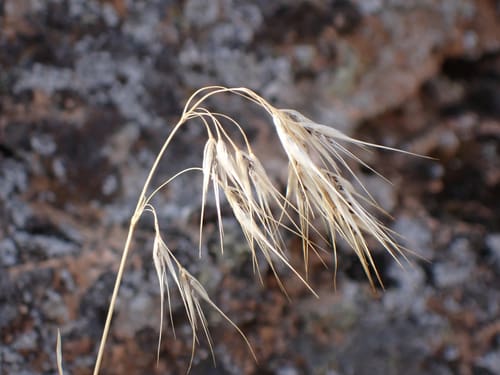
Left: Ruslan Gleb (CC BY NC via iNaturalist) Middle: Neil O. Frakes (CC BY NC via iNaturalist)
Right: John D Reynolds (CC BY NC via iNaturalist)
A rugged invader
Humans introduced cheatgrass to the Northeastern United States by accident sometime around 1860. You can find it in many places around New England, but in the presence of such an overwhelming amount of water, it often fails to compete with its fellow grasses and is relegated to cracks in sidewalks and highway islands full of compacted, inhospitable soil. Cheatgrass seems lost on this coast; few in the East know what it is or why it’s here. It is a plant surviving as plants do, regardless of the “invasive” status we’ve thrust upon it. In the West, however, its success is something wicked and wonderful.
Any water from the winter’s snowmelt or early spring rains gets sucked up by the eager roots of the cheatgrass, leaving little for the still-sprouting native grasses, forbes, and shrubs, even as their taproots probe deep into the earth. Ecologists curse the plant for its brutal efficiency in driving out those native to the arid steppe; birders lament the loss of woody habitat for their feathered favorites; ranchers sigh at the sight of yet another dry, nutritionally-deficient plant that even their toughest cow is loath to graze. And there is, of course, the fire. Cheatgrass dies and dries in the early summer, long before native grasses do, providing an early fuel source for the ever-lengthening fire season.

Jose Hernandez, USDA (Public Domain via Wikicommons)
The seeds lie in wait in the earth, and in the spring, they unfurl their new leafy heads and emerge from between blackened sagebrush branches. In the grass’s native range in Europe and Southwestern Asia, the plant is no worse or better than any other; it just is. Moths and butterflies lay their eggs along its edges. Ungulates nibble it slowly as their eyes each search opposite directions for the next snack.
Nearly all of the existing research on the plant explores its role far from home, in the United States. It is grass, and it would be hard to imagine that here on the other side of the world, some field tech is cursing its very existence. You’d never know from looking at the cheatgrass that ranchers and federal scientists alike have spent years dousing their own lands in herbicides with the hope of its extirpation. We humans have of course played our role in keeping the cheatgrass strong even as we try to drive it out, since cheatgrass, like many invasives, is far better at taking over already-disturbed soils where the native plant communities and biological soil crusts have been weakened. As extreme wildfires, agricultural use, overgrazing, and the general ravages of climate change continue to impact larger and larger regions, so too does the invasive capacity of the cheatgrass.
I wore a different pair of socks hiking that day for fear of bringing more cheatgrass to Connecticut. It was silly, though; the cheatgrass already knows this land well.
Jasmine

Jasmine Gormley is an environmental scientist, writer, and advocate from New Hampshire. She holds a BS in Environmental Studies from Yale, where she conducted research in plant community ecology and land management. She aims to obtain a degree in environmental law. As a first-generation college student, she is passionate about equity in educational and environmental access, and believes that environmental justice and biodiversity conservation are often one and the same. In her spare time, you can find her rock climbing, foraging, and going for cold water swims.
Sources and Further Reading:
- Soil lichen and moss cover and species richness can be highly dynamic: The effects of invasion by the annual exotic grass Bromus tectorum, precipitation, and temperature on biological soil crusts in SE Utah, Jane Belnap et al.
- SPECIES: Bromus tectorum, USDA
- Cheatgrass, Fire, and Sagebrush, Rockies Audubon
- Sagebrush, perennial grasses & soil moisture: what should we expect?, John Bradford

